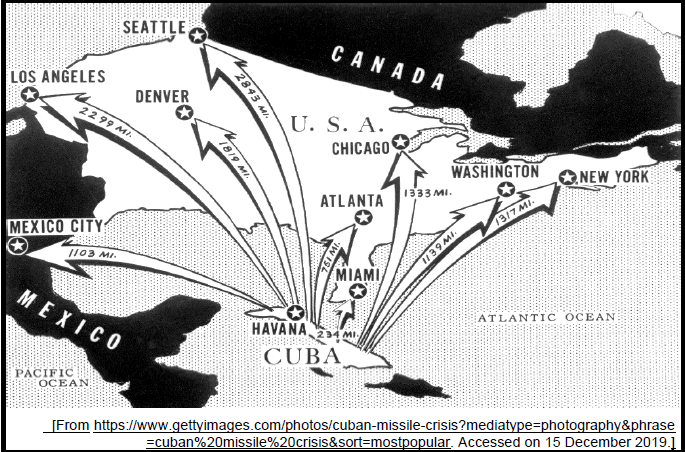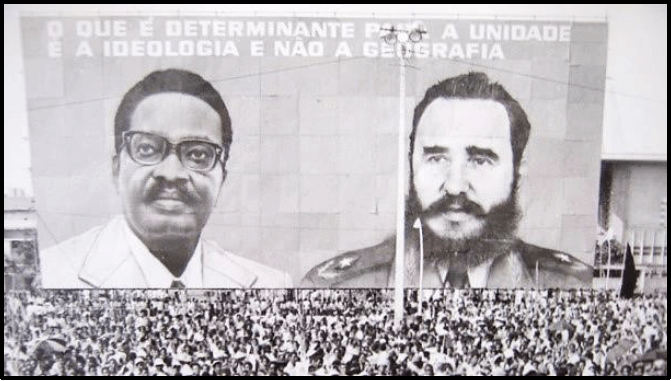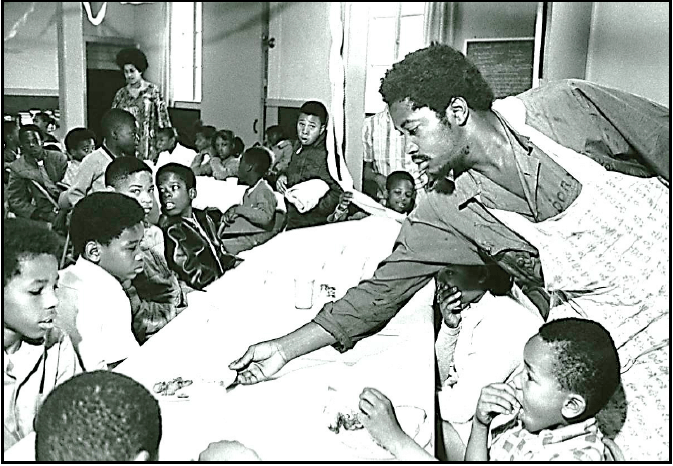History Paper 1 Grade 12 Addendum - NSC Past Papers And Memos September 2020 Preparatory Examinations
Share via Whatsapp Join our WhatsApp Group Join our Telegram GroupADDENDUM
QUESTION 1:
HOW DID THE DEPLOYMENT OF MISSILES TO CUBA CONTRIBUTE TO COLD WAR TENSIONS BETWEEN THE SOVIET UNION AND THE UNITED STATES IN THE 1960s?
SOURCE 1A
This source is an extract from a Soviet statement on a potential Cuban attack by the United States (11 September 1962).
The Government of the U.S.S.R. deems it necessary to draw the attention of the governments of all countries and world opinion to the provocations the United States Government is now staging, provocations which might plunge the world into the disaster of a universal world war with the use of thermonuclear weapons. War-minded reactionary elements of the United States have long since been conducting an unbridled (unchecked) propaganda campaign against the Cuban Republic, calling for an attack on Cuba, an attack on Soviet ships carrying the necessary commodities and food to the Cuban people, in one word, calling for war. The President of the United States asked Congress to permit the call-up of 150 000 reservists to the armed forces of the United States … Such a step by the United States Government cannot be assessed otherwise than a screen for aggressive plans and intentions of the United States itself and will inevitably lead to aggravating the international atmosphere. … We do not hide from the world public that we really are supplying Cuba with industrial equipment and goods which are helping to strengthen her economy and raise the well- being of the Cuban people. … It will be recalled that a certain amount of armaments is also being shipped from the Soviet Union to Cuba at the request of the Cuban government in connection with the threats by aggressive imperialist circles. The Cuban statesmen also requested the Soviet Government to send to Cuba Soviet military specialists, technicians who would train the Cubans in handling up-to-date weapons, because up-to-date weapons now call for high skill and much knowledge. It is but natural that Cuba does not yet have such specialists. The armaments and military equipment sent to Cuba are designed exclusively for defensive purposes and the President of the United States and the American military just as the military of any country know what means of defence are. How can these means threaten the United States? |
[From http://www.mtholyoke.edu/acad/intrel/precrisis.htm. Accessed on 21 November 2019.]
SOURCE 1B
The following source is a map that the USA published to indicate the impact of the nuclear missiles in Cuba.
[From https://www.gettyimages.com/photos/cuban-missile-crisis?mediatype=photography&phrase=cuban%20missile%20crisis&sort=mostpopular. Accessed on 15 December 2019.]
SOURCE 1C
This source is an extract from President John F. Kennedy’s speech to the nation on radio and television about the Soviet missiles in Cuba on October 22, 1962.
Good evening, my fellow citizens. This Government, as promised, has maintained the closest surveillance of the Soviet military build-up on the island of Cuba. Within the past week, unmistakable evidence has established the fact that a series of offensive missile sites is now in preparation on that imprisoned island. The purpose of these bases can be none other than to provide a nuclear strike capability against the Western Hemisphere. The characteristics of these new missile sites indicate two distinct types of installations. Several of them include medium range ballistic missiles, capable of carrying a nuclear warhead for a distance of more than 1 000 nautical miles. Each of these missiles, in short, is capable of striking Washington, D.C., the Panama Canal, Cape Canaveral, Mexico City, or any other city in the south-eastern part of the United States, in Central America, or in the Caribbean area. To halt this offensive build-up, a strict quarantine on all offensive military equipment under shipment to Cuba is being initiated. All ships of any kind bound for Cuba from whatever nation or port will, if found to contain cargoes of offensive weapons, be turned back ... We are not at this time, however, denying the necessities of life as the Soviets attempted to do in their Berlin Blockade of 1948. |
[From https://spartacus-educational.com. Accessed on 16 December 2019.]
SOURCE 1D
This source is a translation of a telegram from Khrushchev to Kennedy sent from the Embassy in the Soviet Union to the Department of State, Moscow, October 26, 1962.
Let us therefore show statesmanlike wisdom. I propose we, for our part, will declare that our ships, bound for Cuba, are not carrying any armaments. You would declare that the United States will not invade Cuba with its forces and will not support any sort of forces which might intend to carry out an invasion of Cuba. Then the necessity for the presence of our military specialists in Cuba would disappear. Mr President, I appeal to you to weigh well what the aggressive, piratical actions, which you have declared the USA intends to carry out in international waters, would lead to. You yourself know that any sensible man simply cannot agree with this, cannot recognise your right to such actions. If you did this as the first step towards the unleashing of war, well then, it is evident that nothing else is left to us but to accept this challenge of yours. If, however, you have not lost your self-control and sensibly conceive what this might lead to, then, Mr President, we and you ought not now to pull on the ends of the rope in which you have tied the knot of war, because the more the two of us pull, the tighter that knot will be tied. And a moment may come when that knot will be tied so tight that even he who tied it will not have the strength to untie it, and then it will be necessary to cut that knot. And what that would mean is not for me to explain to you, because you yourself understand perfectly of what terrible forces our countries dispose. Consequently, if there is no intention to tighten that knot and thereby to doom the world to the catastrophe of thermonuclear war, then let us not only relax the forces pulling on the ends of the rope, let us take measures to untie that knot. We are ready for this. |
[From https://microsites.jfklibrary.org/cmc/oct26/doc4.html. Accessed on 16 December 2019.]
QUESTION 2:
WHY DID FOREIGN POWERS BECOME INVOLVED IN THE ANGOLAN WAR OF INDEPENDENCE?
SOURCE 2A
This source explains the power struggles that erupted after Angola became independent in 1974.
| Three main military movements had been fighting for Angolan independence since the 1960s. The Popular Movement for the Liberation of Angola (MPLA) was a Marxist organisation centred in the capital, Luanda, and led by Agostinho Neto. The National Front for the Liberation of Angola (FNLA) led by Holden Roberto, was based in the north of the country and had strong ties to the US ally (friend), Mobutu Sese Seko, in neighbouring Zaire. The National Union for the Total Independence of Angola (UNITA), an offshoot of the FNLA, was by Jonas Savimbi and supported by the country’s largest ethnic group, the Ovimbundu. Following the Portuguese coup (revolution), these three revolutionaries met with representatives of the new Portuguese government in January 1975 and signed the Alvor Agreement that granted Angolan independence and provided for a three-way power sharing government. However, trust quickly broke down among the three groups, and the country descended (fell) into civil war as each vied (competed) for sole (total) power. The crisis in Angola developed into a Cold War battleground as the superpowers and their allies delivered military assistance to their preferred clients. The United States supplied aid and training for both the FNLA and UNITA while troops from Zaire assisted Holden Roberto and his fighters. China also sent military instructors to train the FNLA. During the summer of 1975, the Soviet-supported MPLA was able to consolidate power in Luanda and oust the U.S.-supported FNLA from the capital, but the FNLA continued to attack. |
[From https://history.state.gov/milestones/1969-1976/angola. Accessed on 05 April 2020.]
SOURCE 2B
The source below outlines the reasons for South Africa’s involvement in Angola during the 1970s.
SA’s first intervention of Angola seems to have resulted from the need to secure and protect its own interests. The government was severely anti-communist at this time, as the notion of the ‘total national strategy’ against the ‘total onslaught’ of communism became the all-encompassing factor that determined foreign policy. SA’s détente politics toward Africa at this time was pursued rather successfully prior to the Angolan intervention in order to establish buffer zones, which would hopefully protect SA from the increasing communist threat. In addition, SA was becoming increasingly worried about this possible threat as the USSR and Cuba were enlarging their support to the MPLA after the coup in Portugal in 1974. The concentration of SWAPO insurgents on the southern Angola border furthermore endangered SA’s interests in SWA, as SWAPO was one of the MPLA’s biggest African allies. Both the MPLA and SWAPO were seen as Soviet proxies during the Cold War. In addition, SA was pressured by some in the international community to get involved in Angola for the first time. The USA, like SA, was also strongly anti-communist and supported SA’s initial involvement to some extent. France also had concerns. SA also saw its limited initial involvement as an opportunity to establish a less hostile government in Angola, than what was already established in Mozambique. The FNLA, UNITA and several African and international actors such as Zaire and even Zambia made similar requests. South Africa decided that it would be in its own as well as the region’s best interest to intervene in the Angolan conflict. |
[From South Africa’s Intervention in Angola: Before Cuito Cuanavale and Thereafter file:///E:/Angola%202/labuschagne_south_2009.pdf. Accessed on 05 April 2020.]
SOURCE 2C
The extract below indicates how the United States of America supported UNITA during the Angolan Civil War.
The Central Intelligence Agency (CIA) made its first major weapons shipment to the FNLA in July 1975. Thus, like the Russians and Chinese, the United States was giving aid to one side of Angolan Civil War on a level far greater than it had ever provided during the struggle against Portuguese colonialism. The United States was directly involved in the civil war to a marked (noticeable) degree. In addition to training Angolan combat units, US personnel did considerable flying between Zaire and Congo carrying out reconnaissance (investigation) and supply missions, and the CIA spent over a million dollars on an ambitious mercenary (hired soldiers) programme. Several reports appeared in the US press stating that many American guerrillas were fighting in Angola against the MPLA from ‘scores’ to ‘300’ and that many others were recruited and trained in the United States to join them. But John Stockwell, the head of CIA’s Angola task force, puts the number of American mercenaries who actually made it to Angola at only 24. The CIA was also directly financing the arming of British mercenaries (fighting in Angola). Subsequently (later) the Secretary of the State, Henry Kissinger, informed the Senate that ‘the CIA is not involved’ in the recruitment of mercenaries for Angola. … Through recruited journalists representing major news service, the Agency (CIA) was able to generate international coverage of false reports for Soviet advisers in Angola. One CIA story, announced to the press by UNITA, was that 20 Russians and 35 Cubans had been captured. Another fabrication (lie) concerned alleged rapes committed by Cuban soldiers in Angola; this was elaborated to include their capture, trial and execution … |
[From http://williamblum.org/chapters/killing-hope/angola. Accessed on 7 March 2020.]
SOURCE 2D
This poster depicts President Agostinho Neto and Fidel Castro after Angolan independence celebrations.
[From https://mrdivis.wordpress.com/2016/12/02/remembering-fidel-castros-impact-in-southern-africa/.
Accessed on 7 March 2020.]
QUESTION 3:
WHAT WAS THE IMPACT OF THE BLACK POWER MOVEMENT ON AFRICAN AMERICANS IN THE 1960s?
SOURCE 3A
The extract below outlines Stokely Carmichael’s explanation regarding the philosophy of Black Power.
The Black Power Movement grew out of the Civil Rights Movement that had steadily gained momentum through the 1950s and 1960s. Although not a formal movement, the Black Power Movement marked a turning point in black-white relations in the United States and in how blacks saw themselves. The movement was hailed (welcomed) by some as a positive and proactive force aimed at helping blacks achieve full equality with whites, but it was reviled (hated) by others as a militant, sometimes violent faction whose primary goal was to drive a wedge (division) between whites and blacks. In truth, the Black Power Movement was a complex event that took place at a time when society and culture were being transformed throughout the United States, and its legacy reflects that complexity. Blacks still faced lower wages than whites, higher crime rates in their neighbourhoods, and unspoken but palpable (deep) racial discrimination. Young blacks in particular saw the Civil Rights Movement as too mainstream to generate real social change. What they wanted was something that would accelerate (quicken) the process and give blacks the same opportunities as whites, not just socially but also economically and politically. Perhaps more important, they felt that the Civil Rights Movement was based more on white perceptions of civil rights than black perceptions. By the mid-1960s, dissatisfaction with the pace of change was growing among blacks. The term 'black power' had been around since the 1950s, but it was Stokely Carmichael, head of the Student Non-violent Co-ordinating Committee (SNCC), who popularised the term in 1966. |
[From http://www.encyclopedia.com/social-sciences-and-law/sociology-and-social- reform/socialreform/black-power-movement. Accessed on 18 November 2019.]
SOURCE 3B
The source below explains the reasons why the Black Panther Party launched their breakfast programme.
In 1969, a group of children sat down to a free breakfast before school. On the menu: chocolate milk, eggs, meat, cereal and fresh oranges. The scene wouldn’t be out of place in a school cafeteria these days – but the federal government wasn’t providing the food. Instead, breakfast was served thanks to the Black Panther Party. At the time, the militant Black Nationalist party was vilified (criticised) in the news media and feared by those intimidated by its message of black power and its commitment to ending police brutality and subjugation (suppression) of black Americans. But for students eating breakfast, the Black Panther’s politics were less interesting than the meals they were providing. “The children, many of whom had never eaten breakfast before the Panthers started their program,’’ The Sun reporter wrote, “think the Panthers are ‘groovy’ and ‘very nice’ for doing this for them.’’ The program may have been groovy, but its purpose was to fuel revolution by encouraging black people’s survival. From 1969 through the early 1970s, the Black Panthers’ Free Breakfast for School Children Program fed tens of thousands of hungry kids. … School officials immediately reported results in kids who had free breakfast before school. “The school principal came down and told us how different the children were’’, Ruth Beckford, a parishioner who helped with the program, said later. “They weren’t falling asleep in class, they weren’t crying with stomach cramps.’’ … Food wasn’t the only part of the BPP’s social programs; they expanded to cover everything from free medical clinics to community ambulance services and legal clinics. |
[From //www.hist.com/news/free-school-breakfast-black-panther-party. Accessed on 07 March 2020.]
SOURCE 3C
This photograph shows members of the Philadelphia Black Panthers organisation, serving breakfast to children.
[From https://www.cbsnews.com/pictures/inside-the-black-panthers-photographer-stephen-
shames/16/. Accessed on 21 November 2019.]
SOURCE 3D
The source below is an extract of an article written by Mary Philips called Power of the First-person narrative: Ericka Huggins and the Black Panther Party.
Born Ericka Cozette Jenkins on January 5, 1948, in Washington, DC, Huggins joined the BPP in 1967 in Los Angeles. As a college student at Lincoln University in Pennsylvania, she was involved in the Black Student Congress (BSC), a campus organisation, despite the fact that the BSC was resistant to female membership: “They didn’t appreciate women joining the Black Student Congress as it was called then but they did let me join” (Interview by the author, July 20, 2011). In college, she read a Ramparts magazine article on charges against Huey P. Newton for the murder of an Oakland police officer. Moved by the inhumane treatment of Newton after his arrest, Huggins mentioned the picture in that Ramparts magazine article showed Huey without a shirt strapped to a hospital gurney, with a bullet wound in his stomach. The white police officer was obviously guarding the camera. Inspired by the image and the story, she and her lover, John Huggins, decided to leave school, move to California, and join the BPP. She later married Huggins and they had a daughter, Mai. In the BPP, Ericka Huggins served in many capacities, including working as editor of the BPP newspaper, The Black Panther, also known as The Black Panther Intercommunal News Service. When her husband was murdered by COINTELPRO agents, Huggins moved to her hometown and opened a BPP branch in New Haven, Connecticut. After her arrest, trial, and release in 1971, she served as director of the BPP’s Oakland Community School (OCS), maintaining its daily affairs from 1973 to 1981. She co-wrote the curriculum as well as grants for the school, in addition to supervising and managing staff members. While serving as director, she travelled the country delivering presentations on the school’s pedagogy. |
[From https://www.erickahuggins.com/resources. Accessed on 21 November 2019.]
ACKNOWLEDGEMENTS
Visual sources and other historical evidence were taken from the following:
http://www.mtholyoke.edu/acad/intrel/precrisis.htm
https://www.gettyimages.com/photos/cuban-missile- crisis?mediatype=photography&phrase =cuban%20missile%20crisis&sort=mostpopula
https://spartacus-educational.com.
https://microsites.jfklibrary.org/cmc/oct26/doc4.html
https://history.state.gov/milestones/1969-1976/angola
South Africa’s Intervention in Angola: Before Cuito Cuanavale and Thereafter file:///E:/Angola%202/labuschagne_south_2009.pdf.
http://williamblum.org/chapters/killing-hope/angola
https://mrdivis.wordpress.com/2016/12/02/remembering-fidel-castros-impact-in- southern-africa/.
http://www.encyclopedia.com/social-sciences-and-law/sociology-and-social- reform/socialreform/black-power-movement
www.hist.com/news/free-school-breakfast-black-panther-party.
https://www.cbsnews.com/pictures/inside-the-black-panthers-photographer-stephen- shames/16/.
https://www.erickahuggins.com/resources